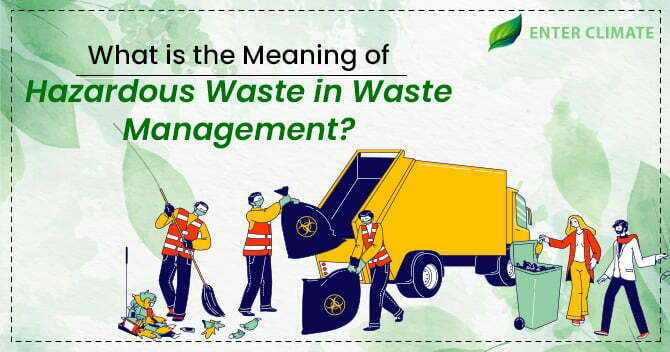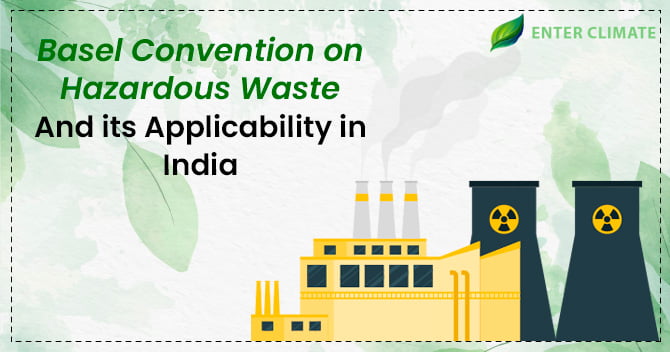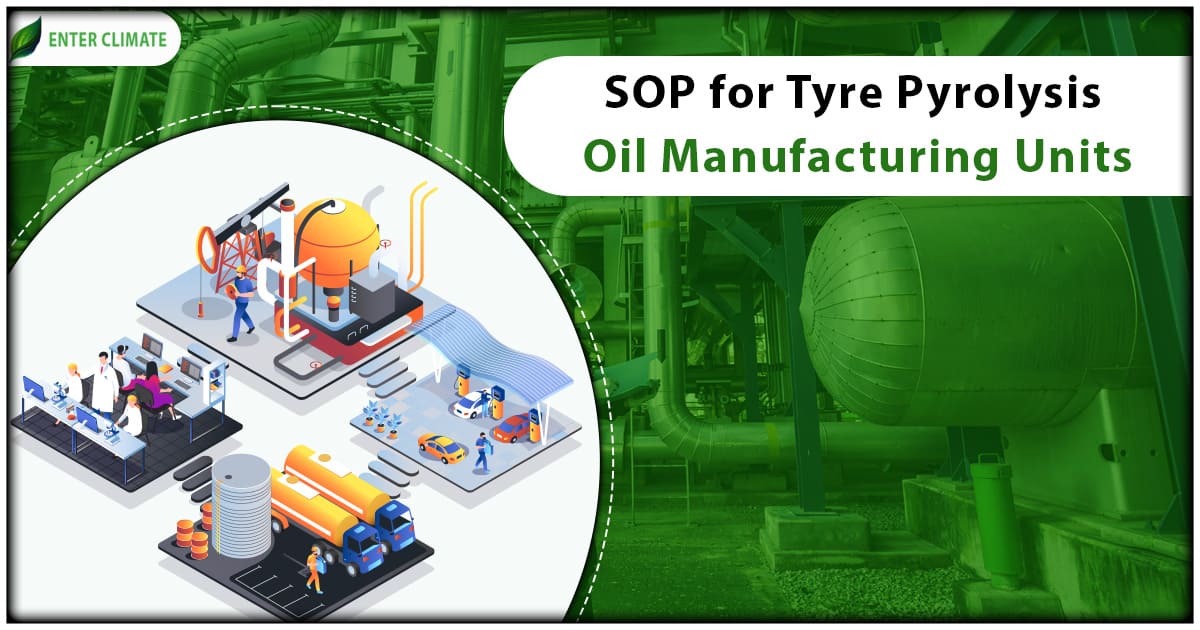What is the Meaning of Hazardous Waste in Waste Management: An Overview
 25 Jul, 2022
25 Jul, 2022 
The definition of something can decide the law’s applicability on the subject. Therefore in the context of waste management, the meaning of hazardous waste becomes essential. The Hazardous and Other Wastes (Management & Transboundary Movement) (HWM) Rules, 2016 gives the meaning of hazardous waste as any waste with some specific physical, chemical, biological, flammable, explosive, reactive, toxic, or corrosive nature that can cause or is likely to cause danger to health or the environment, on its own or in contact with other wastes or substances. Going by this definition, the meaning of hazardous waste can include components of e-waste, biomedical waste, battery waste and radioactive waste, but that is not covered under the HWM Rules, 2016. These categories of waste have specific rules for their management. So what constitutes hazardous and non-hazardous waste has to be understood in the context of India’s waste management laws by every individual involved in waste handling, processing, import and export of such waste.
What constitutes hazardous waste
Identification of waste as hazardous is the first aspect of hazardous waste management. To properly understand the meaning of hazardous waste, the generator or handler of the waste must first identify whether the waste shows hazardous properties or not. Waste is categorised as hazardous by the HWM Rules based on some potentially dangerous and harmful properties. The guidelines issued by MoEF&CC and the CPCB can be used to identify hazardous waste. Waste can be in liquid or solid form and potentially emit hazardous components and harm the environment if it escapes to the surrounding in the form of leachates, suspended air particles or gases. Hazardous characteristics have been defined under Class ‘C’ of Schedule II and Part ‘C’ of Schedule III of HWM Rules. Waste will be categorised as hazardous under the meaning of hazardous waste in the HWM rules if it shows any of the following characteristics
Flammability: if the waste consists of flammable liquids or a mix of liquid and solid that can give off flammable vapours at a temperature less than 60°C, it is categorised as flammable or ignitable. The following properties can be observed to establish a flammable nature
- If the waste is not aqueous but has the potential to ignite under standard temperature and pressure can cause fire due to friction, absorption, moisture or any chemical changes.
- If the waste has the potential to release oxygen, for example, waste containing chlorate, permanganate, inorganic peroxide, or nitrates.
Corrosivity: When the surface of the metal is subjected to a corrosive substance, it leads to gradual deterioration of the surface of that substance. For instance, rusting is a common example of the corrosion of iron. Waste is categorised as corrosive if
- it is liquid waste or when mixed with water, forms an aqueous solution of pH less than or equal to 2 (acidic) or greater than or equal to 12.5 (basic).
- it is a liquid waste or can forman aqueous solution that will corrode steel at a rate greater than 6.35 mm per year at a temperature of 55 degrees Celcius(in testing conditions)
Toxicity: Toxic term in waste characterisation is used when poisonous substances like insecticides, paints, and metals harmful to animals and humans can be found in that waste. Such toxic substances cause serious illness, debilitation or even death in living organisms and make natural resources like water and air inhabitable. Under HWM Rules, toxic waste is identified on the following parameters.
- If the lethal dose is less than 2500 mg per kilogram (oral contact)
- If the lethal dose is less than 4300 mg per kilogram (dermal contact)
- If the lethal dose is less than 10,000 ppm (if inhaled)
Explosivity: this category includes waste that, after reaction with waste, can cause violent changes like an explosion. Under the meaning of hazardous waste, explosive waste is identified based on the following parameters.
- If it reacts violently with water or forms a potentially explosive compound.
- If it generates toxic fumes in quantities dangerous to humans or the environment or has such potential when coming in contact with water.
- If it is a waste containing cyanide or sulphide and can release toxic fumes in dangerous quantities when coming in pH conditions between 2 to 12.5.
- If it is capable of explosive decomposition under normal conditions.
Reactivity: This waste category includes phosphorous or sodium metal-containing wastes that are unstable under normal conditions and can cause explosions or release toxic fumes when heated, compressed or mixed with water.
Responsibilities of the Generator and Disposal of Hazardous Waste
Specific responsibilities have been imposed upon both the generator and the occupier of disposal units handling hazardous waste to ensure safe and environmentally sound waste management. The occupier must implement measures to minimise waste generation, promote reuse, recycling and recovery of usable parts of the waste and avoid polluting natural resources through indiscriminate disposal of such waste. Similarly, the responsibilities of the occupier have been laid down in the HWM Rules. Some common precautions mentioned below must be taken in this regard.
Packaging and labelling: The handler and the facility owner managing hazardous must ensure that the hazardous wastes are packaged and labelled as per the safety guidelines issued by the CPCB and the SPCB.
Transportation of hazardous waste: transport of hazardous waste must be by the provisions of the HWM Rules and the rules made by the Central Government (under MV Act, 1988) and the CPCB[1] from time to time.
Manifest system for hazardous waste: The sender of the waste must prepare multiple copies of the colour-coded manifest (movement documents) for the waste in Form 10, all of which must be signed by the sender.
Storage, treatment and disposal of hazardous waste: The operator of a waste treatment facility, storage units and disposal facilities must be maintained and operated as per technical guidelines issued by the CPCB for hazardous waste.
Accident reporting: In case of an accident during transportation or treatment of hazardous waste, the occupier of the facility handling hazardous wastes/ disposal or transportation must immediately intimate the State Pollution Control Board (SPCB).
Conclusion
Understanding the applicability of relevant laws and penalties, proper treatment, disposal and transportation of hazardous waste, including import and export, requires understanding the meaning of hazardous waste for identification and safety purposes. Many countries try to eliminate the waste generated on their land by exporting them to less developed and willing countries for disposal. National regulations in such countries may allow the import and export of hazardous waste for disposal, but whether such disposal is safe and in the best interest will require a proper understanding of the meaning of hazardous waste by these countries. This task will require educating the common public about the meaning of hazardous waste and its adverse implication on their surrounding environment. Many regulations to counter such illegal and disguised practices are in existence today. Basel convention covered a wide range of wastes as “hazardous wastes” based on their origin, composition, and characteristics, as well as for “other wastes” and aimed to promote waste management, but did not ban the transboundary movement of hazardous waste to developing countries initially. The scope and significance of hazardous waste management can be diminished if the definition of hazardous waste in the national laws does not align with internationally accepted definitions.













